Slat and Flap Effects on Airfoil Performance Enhancement Using CFD Analysis
$140.00 $70.00 Student Discount
- This project investigates the aerodynamic performance enhancement of an airfoil through CFD analysis in ANSYS Fluent.
- Three configurations are studied: a clean airfoil, an airfoil with a slat, and an airfoil with both slat and flap.
- The geometry was designed in ANSYS Design Modeler and meshed using ANSYS Meshing, resulting in approximately 5 million elements.
- The simulations use a density-based solver to account for compressibility effects.
- The study demonstrates significant improvements in lift-to-drag ratio, particularly when both slat and flap are employed.
To Order Your Project or benefit from a CFD consultation, contact our experts via email (info@mr-cfd.com), online support tab, or WhatsApp at +44 7443 197273.
There are some Free Products to check our service quality.
If you want the training video in another language instead of English, ask it via info@mr-cfd.com after you buy the product.
Description
Slat and Flap Effects on Airfoil Performance Enhancement CFD Analysis, ANSYS Fluent
Introduction
High-lift devices are crucial components in aircraft design, particularly for improving performance during takeoff and landing. Slat and Flap Effects significantly enhance lift generation while managing drag by manipulating the airflow around the wing. This study explores the aerodynamic performance of an airfoil under three configurations: clean airfoil, airfoil with slat at 5 degrees, and airfoil with both slat and flap at 16 degrees.
The primary objective is to analyze the effect of these high-lift devices on the lift-to-drag ratio (Cl/Cd) of the airfoil at a freestream velocity of 76.9175 m/s when the angle of attack is 8.53 degrees. This research aims to quantify the improvements in aerodynamic efficiency achieved through the strategic implementation of slats and flaps, providing valuable insights for aircraft designers and aerodynamicists. The CFD simulations were conducted using ANSYS Fluent software. The geometry was designed in ANSYS Design Modeler and meshed using ANSYS Meshing software, resulting in a high-fidelity mesh of approximately 5 million elements for each case.
Methodology
The density-based solver is employed to account for compressibility effects at the given freestream velocity.
A steady-state solution approach was adopted for all three configurations, with the angle of attack set at 8.53 degrees to simulate realistic flight conditions.
The simulations were performed using the Spalart-Allmaras turbulence model, which is suitable for external aerodynamics.
Results
The CFD simulations reveal significant changes in the airfoil’s aerodynamic performance across the three configurations:
In the case of Clean Airfoil, Cd: 0.52486743, Cl: 0.720594615, Cl/Cd: 1.372907852. The velocity contour shows a typical airfoil flow pattern with acceleration over the upper surface and a small wake region at the trailing edge. The pressure contour indicates a classic pressure distribution with lower pressure on the upper surface, contributing to lift generation.
For the Airfoil with Slat (5° angle): Cd: 0.492208478, Cl: 0.690817524, Cl/Cd: 1.403505941. The addition of the slat creates a slot between the slat and the main airfoil body. This slot accelerates the flow, energizing the boundary layer over the main airfoil. This effect delays flow separation, allowing the airfoil to operate at higher angles of attack. The slight increase in Cl/Cd ratio demonstrates the slat’s effectiveness in improving overall aerodynamic efficiency.
Finally, regarding the Airfoil with Slat and Flap: Cd: 0.295331857, Cl: 0.982996024, Cl/Cd: 3.328445608. The most dramatic improvement is observed in this configuration. The pressure contour shows a significant increase in the pressure difference between the upper and lower surfaces, especially near the leading edge and over the flap. This increased pressure difference is the primary reason for the substantial lift increase.
| Cd | Cl | Cl/Cd | |
| Clear Airfoil | 0.52486743 | 0.720594615 | 1.372907852 |
| with Slat | 0.492208478 | 0.690817524 | 1.403505941 |
| with Slat & Flap | 0.295331857 | 0.982996024 | 3.328445608 |
The slat continues to energize the flow over the main airfoil, while the flap effectively increases the camber and surface area of the airfoil. This combination not only increases lift but also significantly reduces drag, as evidenced by the lower Cd value.
The dramatic increase in the Cl/Cd ratio (from 1.37 to 3.33) underscores the synergistic effect of combining both high-lift devices. The slat manages the leading-edge flow, preventing early separation, while the flap increases the effective camber and redirects the flow downwards, augmenting lift generation.

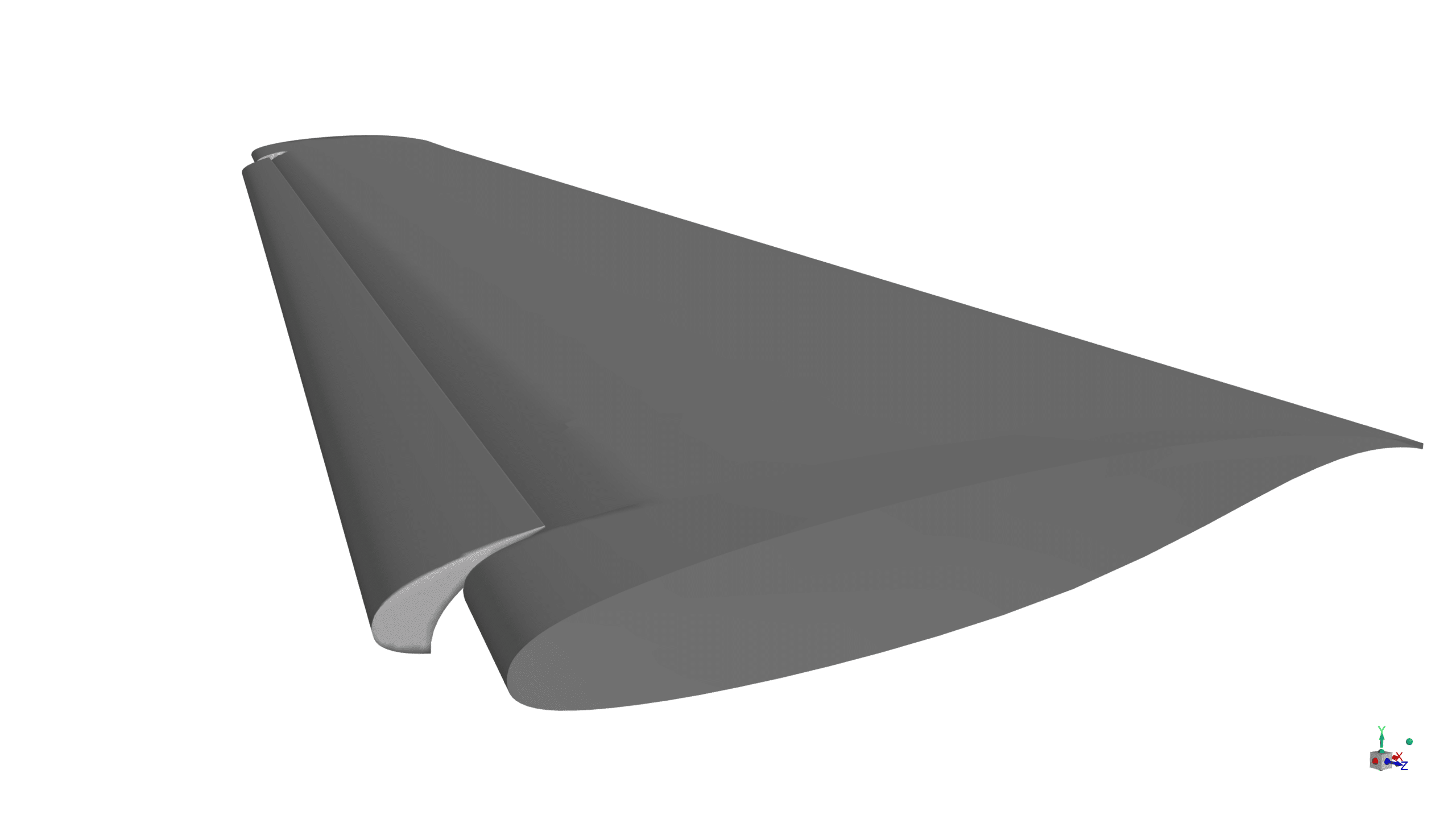

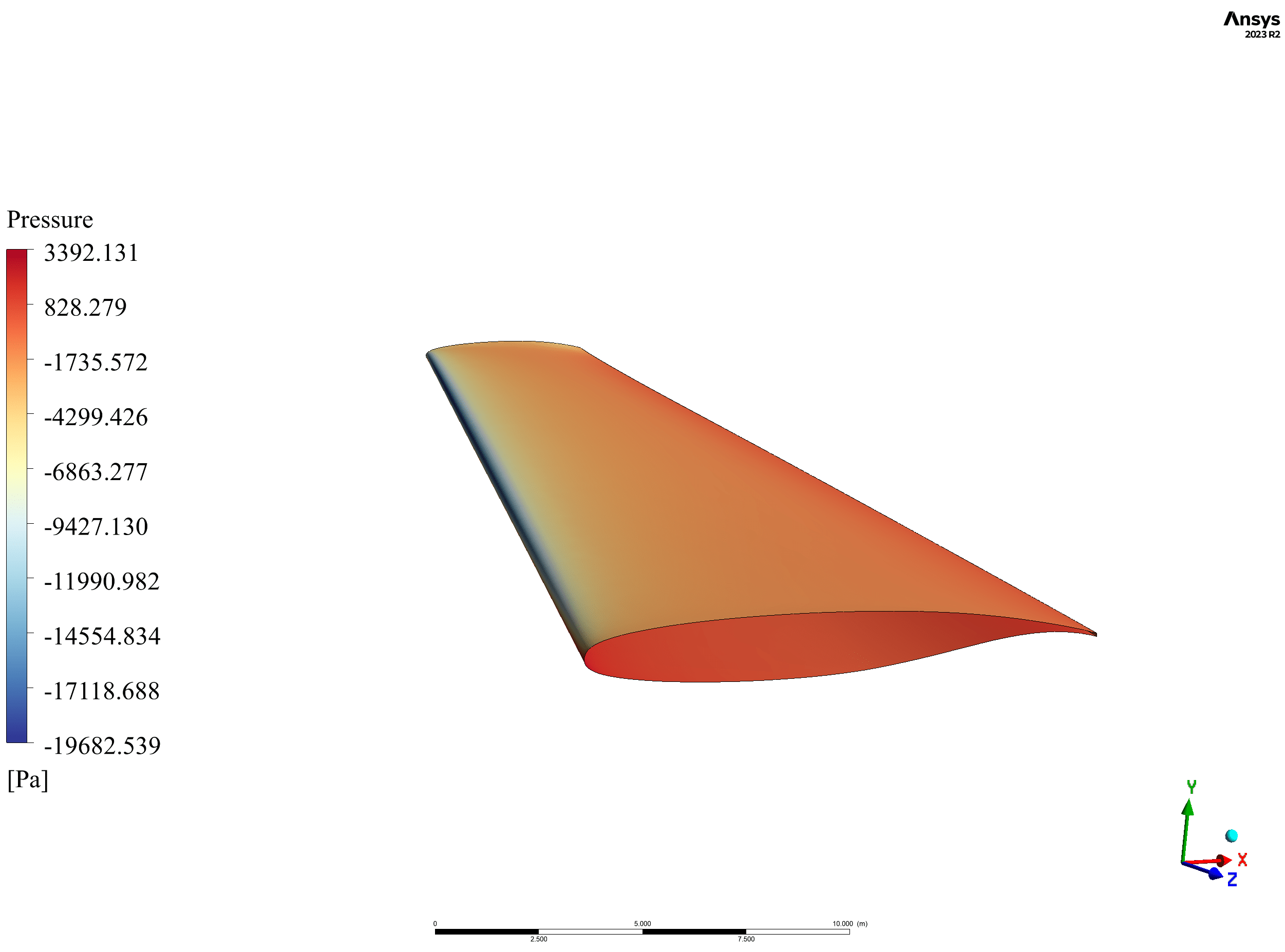


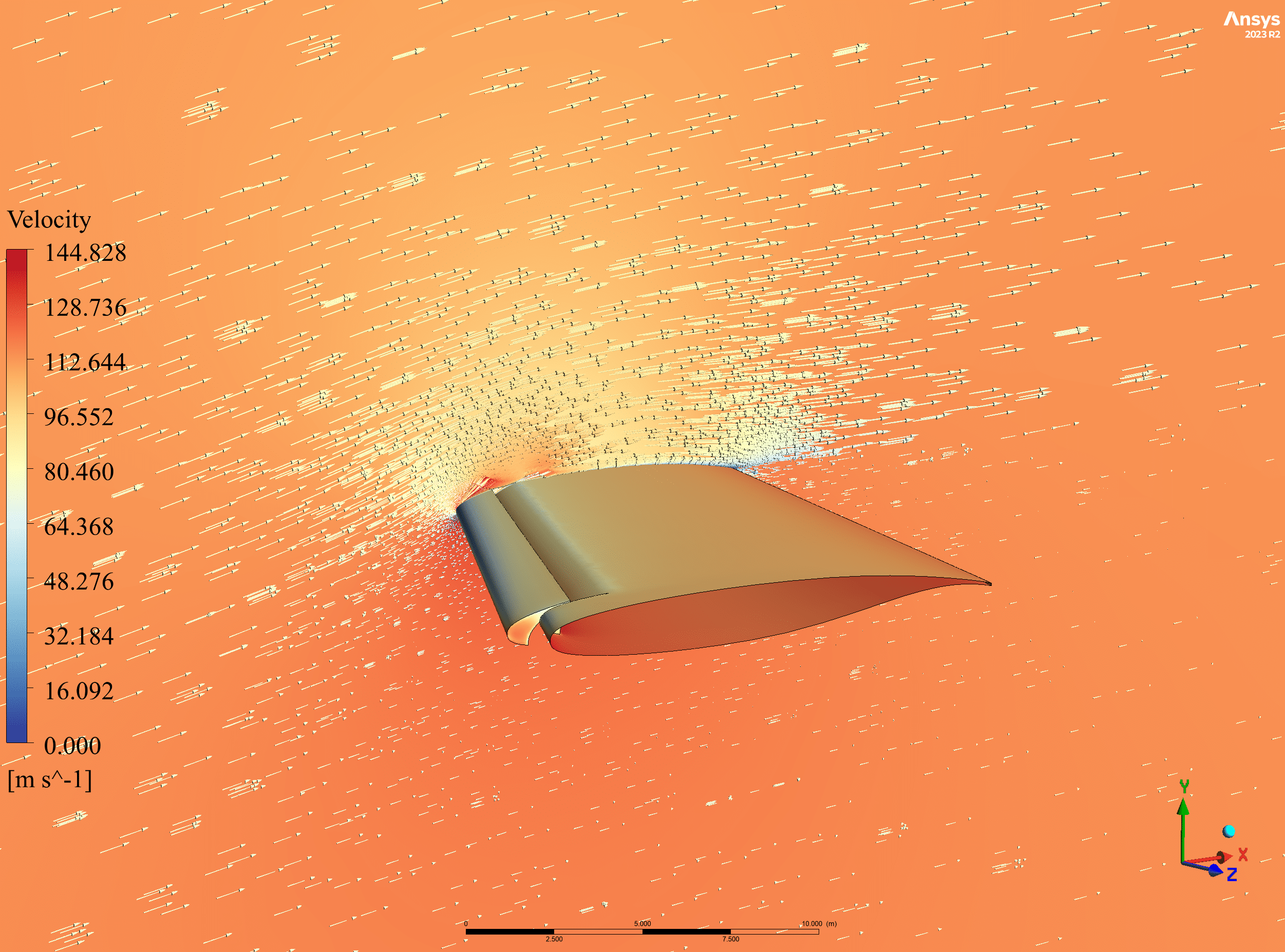

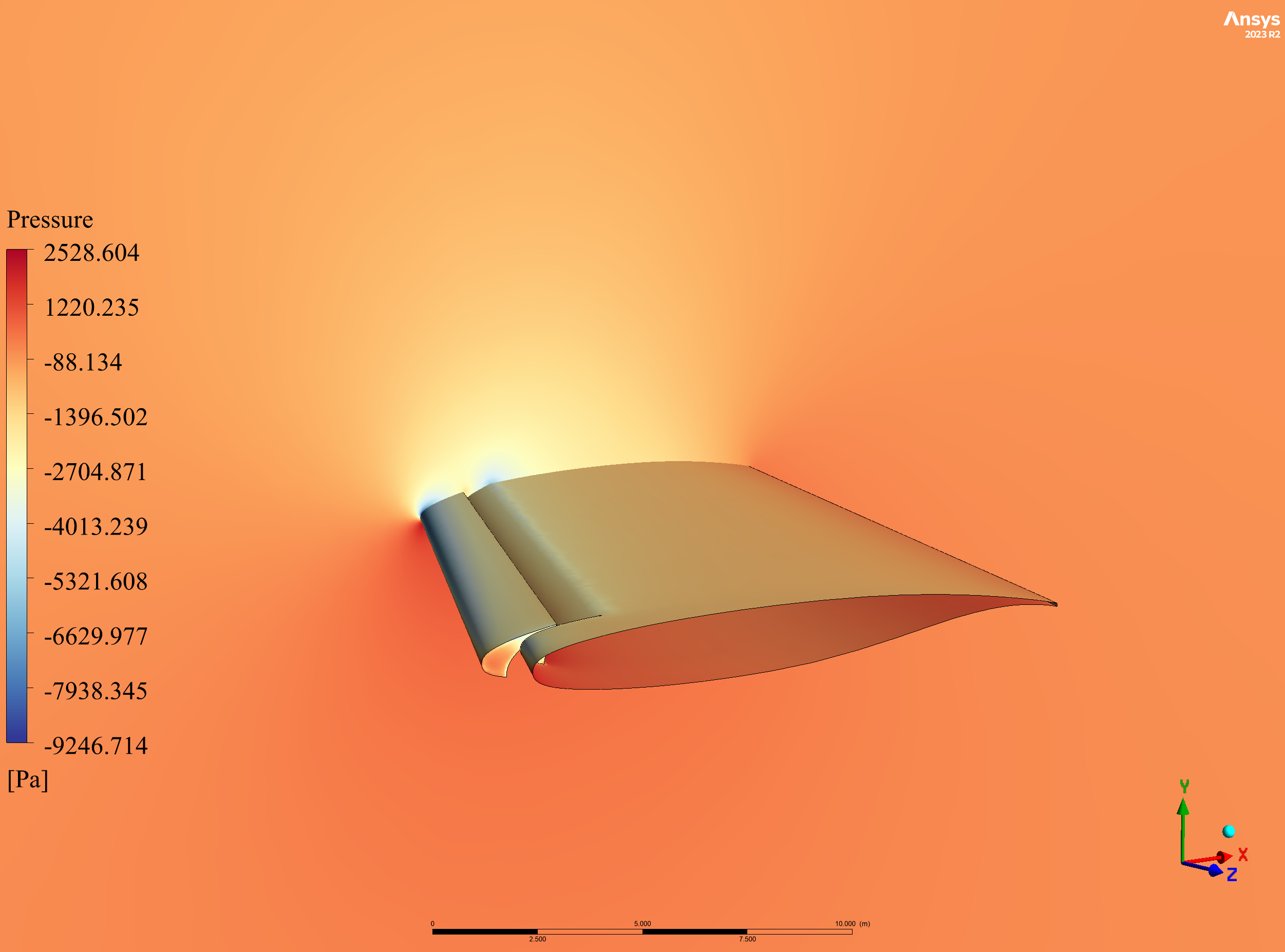


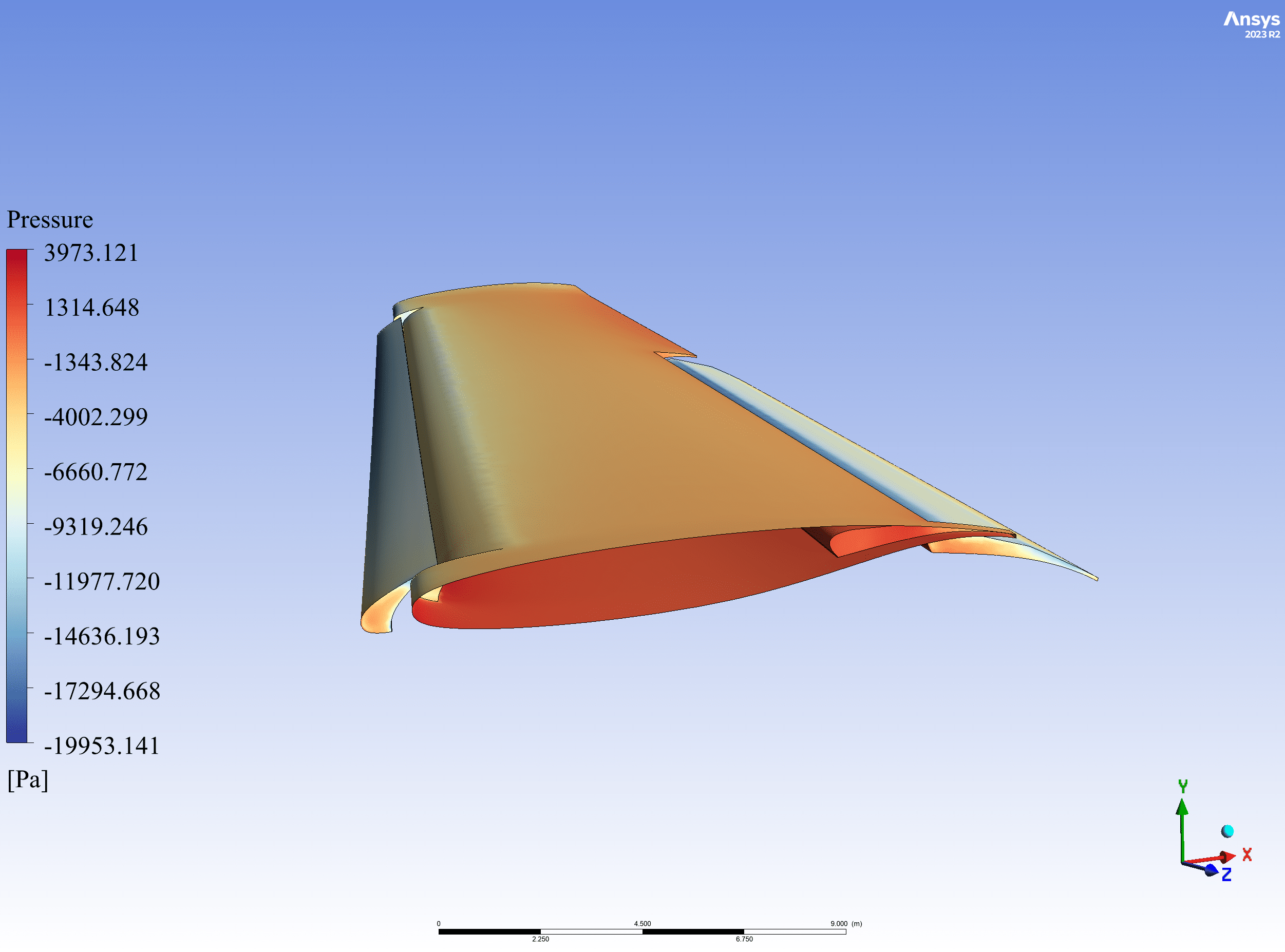



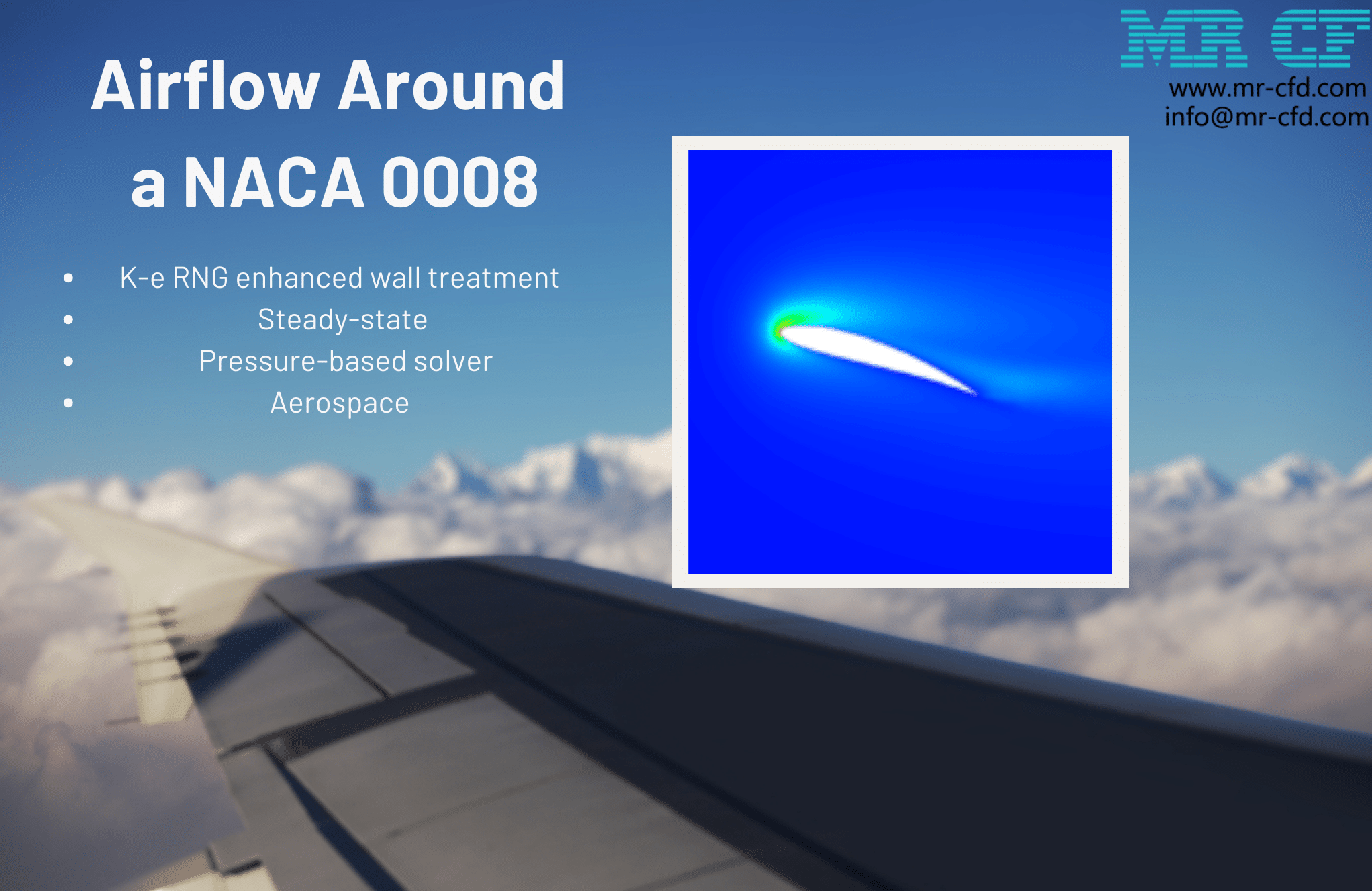


Reviews
There are no reviews yet.